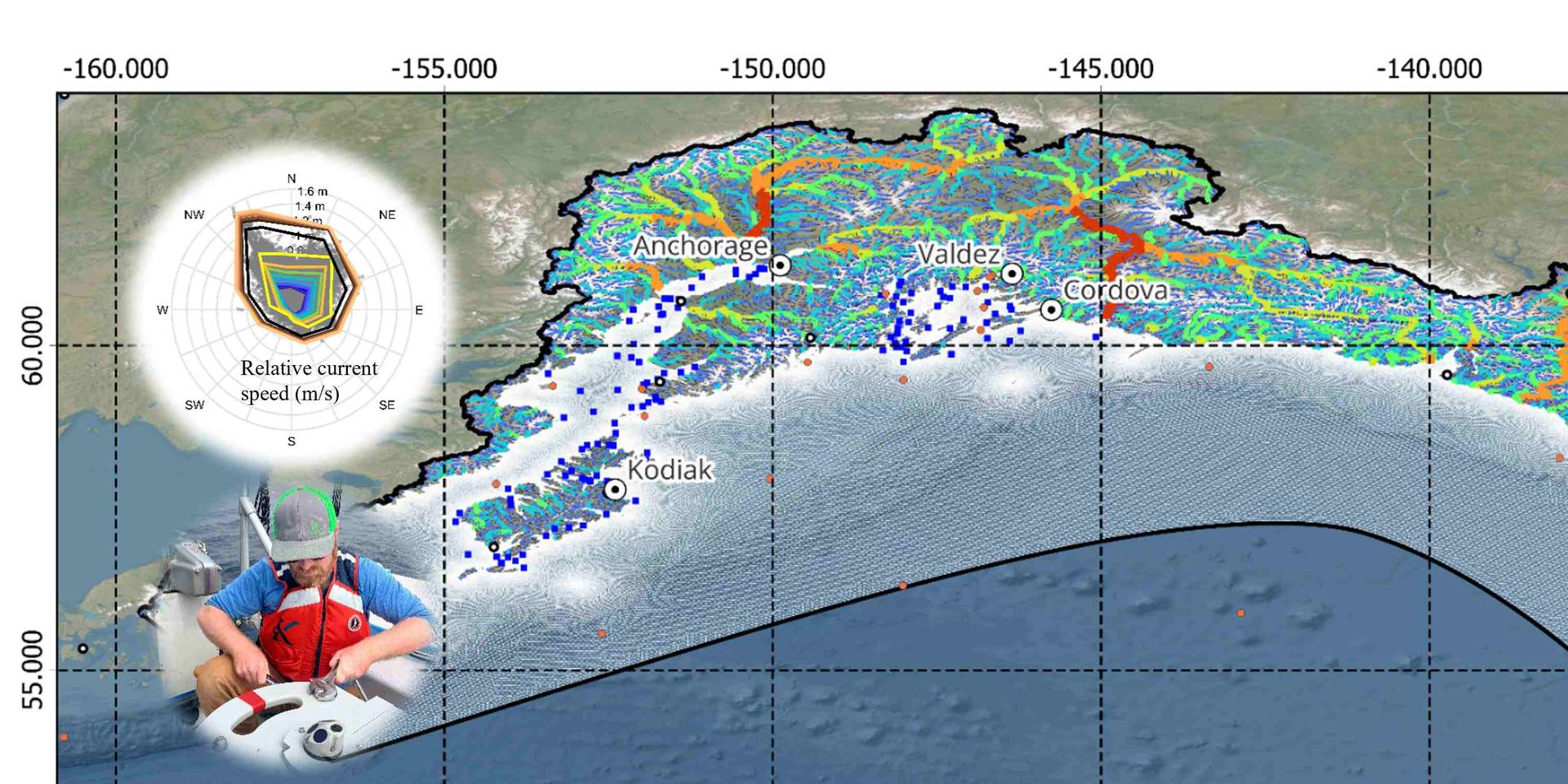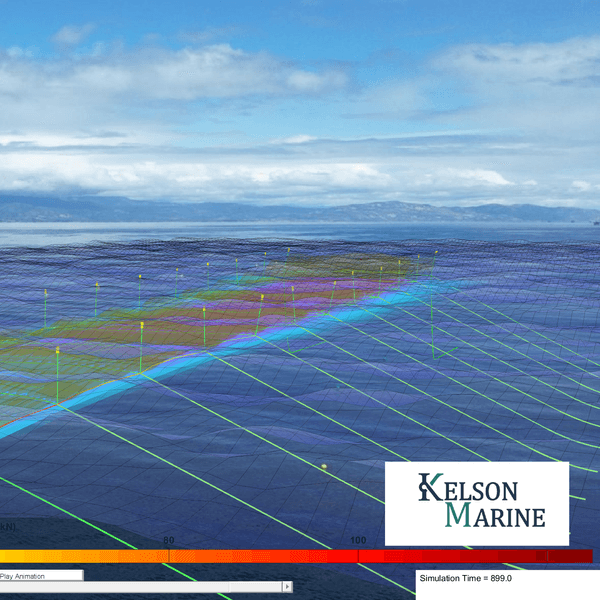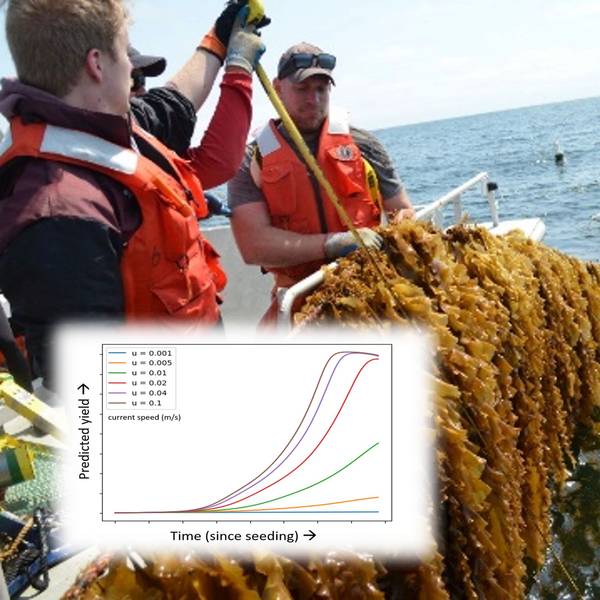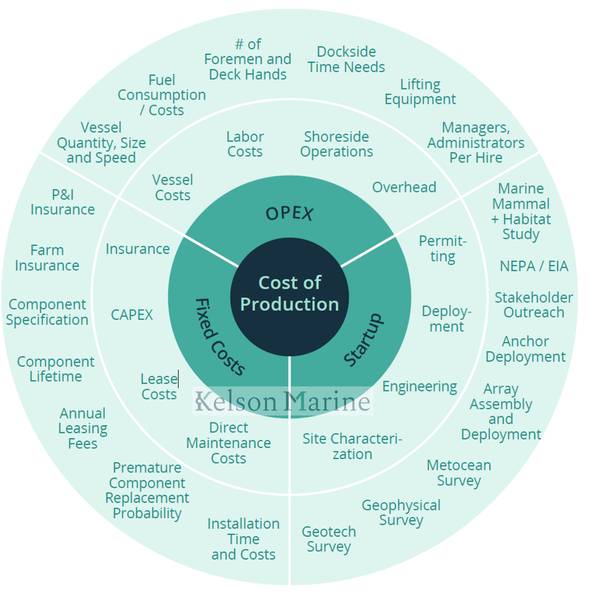
Kelson Marine wins 2-year contract to de-risk mariculture investments in Alaska
Kelson Marine Awarded Two-Year Contract to De-risk Mariculture Investment in Alaska
Through Validated Ocean Modeling, Engineering, and Techno-Economic Analysis
Reducing Risks and Costs with Precision Modeling and Engineering
Kelson Marine Co., a leader in advanced ocean modeling and offshore aquaculture engineering, has been awarded a major contract to deliver high-resolution regional wave, current, and environmental datasets across Southern Alaska’s mariculture corridor. The 22-month project, titled “De-Risking Investments in Aquatic Farming through Validated Regional Ocean and Wave Simulations Integrated with Model-Based Engineering and Techno-Economic Analysis”, represents a critical step forward in supporting Alaska’s growing mariculture industry.
By applying world-class engineering tools, validated hydrodynamic models, and state-of-the-art techno-economic analysis (TEA), Kelson Marine and partners will help eliminate a major bottleneck facing aquaculture investors and operators: a lack of site-specific, high-fidelity data for safe and cost-effective farm development.
“This project is about making aquaculture investment in Alaska faster, smarter, and less risky,” said Tobias Dewhurst, PhD, P.E., CEO of Kelson Marine. “We’re providing the essential metocean intelligence and engineering guidance that lets farmers and developers scale up with confidence.”
Closing the Data Gap
Despite Alaska’s massive mariculture potential, a lack of accessible operational and extreme ocean condition data—like wave heights, current speeds, and nutrient availability—has made site selection, gear specification, and cost planning difficult and expensive. Kelson’s project directly addresses this gap through:
-
Validated Ocean Modeling: Advanced simulations of wave, current, and wind conditions, rigorously benchmarked against real-world measurements.
-
Remote Sensing of Biogeochemistry: Seasonal surface temperature, salinity, turbidity, and chlorophyll-a concentration mapped from satellite data.
-
Farm Design and TEA Modeling: Integration of metocean data, dynamic farm-scale structural design, and biological growth modeling into detailed cost-of-production analysis for both seaweed and shellfish (kelp and oysters), creating realistic economic guidance across thousands of potential farm sites.
Validated Structural Modeling:
Integration of metocean data into dynamic farm-scale structural design for both seaweed and shellfish (kelp and oysters)


Growth Modeling:
Metocean and geochemical data will feed dynamic growth models for both seaweed and shellfish (kelp and oysters), which will be coupled with structural and techno-economic modules.
Techno-economic Analysis: Metocean data, dynamic farm-scale structural modeling, and biological modeling will be combined into a rigorous analysis of cost-of-production for both seaweed and shellfish (kelp and oysters), creating realistic economic guidance across thousands of potential farm sites.

Outcomes
Actionable Maps and Design Guidance for Industry
A key outcome of the project will be an open-access suite of GIS layers and web-based tools, allowing aquaculture stakeholders to visualize environmental conditions and relative production costs across the region—from Ketchikan to Kodiak.
At selected high-potential sites, Kelson will go even further—publishing detailed design specifications, material requirements, and right-sized gear recommendations for representative kelp and shellfish cultivation systems. These will be directly aligned with NOAA’s concurrent Aquaculture Opportunity Area (AOA) study and refined in partnership with an Alaskan industry advisory board.
“From an engineering standpoint, this work is about delivering the right tool for the job—at the right location, for the right species,” said Dewhurst. “Our modeling has already helped commercial farms de-risk in some of the most dynamic environments in Alaska and beyond. This project scales that success.”
Advancing U.S. Offshore Aquaculture
Backed by years of federally funded R&D and private-sector implementation, Kelson’s approach to site-specific ocean simulation and structural analysis is already recognized as one of the most advanced in the world. This contract elevates that work to a regional scale, providing Alaska and the broader U.S. mariculture industry with the data foundation it needs to grow sustainably, efficiently, and competitively.
By providing site-specific estimates of cultivation cost and technical feasibility across a massive and complex coastline, Kelson’s integrated methodology could serve as a model for aquaculture development across other U.S. coastal regions.
Data Accessibility and Impact
All regional ocean datasets, environmental condition maps, and techno-economic outputs will be published at KelsonMarine.com/Resources and shared with The Alaska Ocean Observing System (AOOS) and the NOAA Marine Cadastre’s OceanReports tool for maximum accessibility.
“This is critical infrastructure," said Dewhurst. "This is data and insight that can make the difference between failure and success. And the industry's farmers and investors need that right now.”